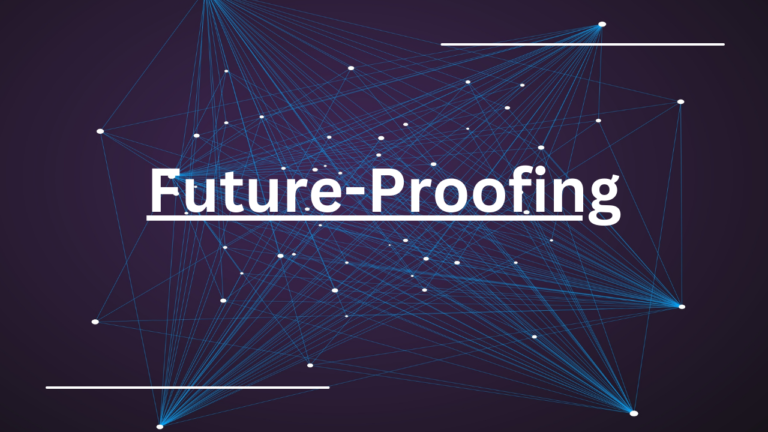
Ethical Frontiers
Embark on a journey into the frontier of artificial intelligence (AI), where moral dilemmas, digital truth (VR) enhancements, and transformative influences converge. This course delves deep into the ethical complexities of AI, navigating the sensitive stability among innovation and privacy concerns. It explores how AI enriches VR environments, pushing the bounds of immersive reports and human-gadget interplay.
Moreover, the Artificial Intelligence Course investigates AI and systems gaining knowledge of’s pivotal function in reshaping industries, forecasting future tendencies, and optimizing operational efficiencies. Understanding Ethical Frontiers these dynamics is important for experts poised to guide in numerous sectors.
Privacy and Ethics of Synthetic Data Generation
Synthetic data is artificially generated data that mimics real-world data. It is increasingly used to protect privacy and improve data availability. However, it raises significant ethical and privacy concerns.
- Privacy Concerns: Synthetic data aims to preserve privacy by avoiding the use of accurate personal data. Despite this, privacy issues still arise.
- Data Reidentification: Even synthetic data can sometimes be reidentified. If the generated data is too similar to accurate data, it may inadvertently reveal sensitive information.
- Data Quality: Ensuring that synthetic data accurately reflects the patterns of accurate data without compromising privacy is challenging. Poor-quality synthetic data can lead to incorrect conclusions.
Ethical Concerns: The ethics of using synthetic data encompass several vital issues.
- Transparency: Users must know when they are dealing with synthetic data. A lack of transparency can lead to mistrust and ethical dilemmas.
- Bias: Synthetic data can inherit biases from the actual data it is based on. If not carefully managed, this can perpetuate or even exacerbate existing biases.
- Informed Consent: Ethical data generation requires considering whether the consent for data use extends to synthetic data creation. Participants in the original data set must understand how their data will be used.
Balancing Privacy and Utility: Achieving a balance between privacy and utility is crucial in synthetic data generation.
Privacy-Preserving Techniques: Implementing advanced techniques like differential privacy can enhance privacy protection. These methods add noise to the data, making reidentification harder.
Accuracy: It is vital to maintain a high level of accuracy while ensuring privacy. Inaccurate synthetic data can mislead decision-making processes.
Evaluation Metrics: Regularly assess synthetic data against metrics for privacy and utility. This helps ensure the data remains useful without compromising privacy.
Enhancing Reality with Augmented Reality
Augmented reality (AR) overlays digital information into the real world. By integrating virtual elements, it enhances our perception of reality.
Key Applications
● Education
● Healthcare
● Retail
● Gaming
● Real Estate
● Manufacturing
Benefits
● Provides additional information seamlessly.
● Reduces time and errors. Enhances productivity.
● Decreases travel costs with virtual meetings.
● Provides real-time data. Enhances understanding and insights.
Future Prospects
Augmented reality complements our interplay with the actual world. Its applications span more than one industry, improving performance and engagement. While there are challenges, ongoing technological advancements promise a vivid future for AR. Embracing this generation can result in enormous benefits in each non-public and professional contexts.
Reshaping the Future of Virtual Reality with AI and ML
Artificial intelligence (AI) and machine learning (ML) are revolutionizing virtual reality (VR). They create immersive and intelligent virtual environments. AI generates lifelike simulations and enhances user interactions. ML tailors the experience to individual users. It adapts content based on user behavior.
AI powers dynamic, non-playable characters (NPCs). These NPCs respond to user actions, creating engaging interactions. AI interprets voice commands and gestures, providing intuitive control within VR environments. ML anticipates user actions, enhancing the fluidity of experiences.
In gaming, AI-driven NPCs and adaptive storylines create unique experiences. In education, immersive learning environments and personalized tutoring transform learning—healthcare benefits from simulated medical procedures and tailored patient rehabilitation.
Retail uses AI for virtual try-ons and product recommendations. Real estate offers interactive property tours and customized designs. Training and simulation feature realistic scenarios adjusted by AI based on performance.
The benefits are significant. VR becomes more immersive and responsive. Learning outcomes improve with tailored content. Training efficiency increases with realistic practice. Personalization enhances customer experiences.
However, the future is promising. Advances in AI and ML will continue, VR hardware will become more affordable, and more industries will adopt VR. AI and ML are reshaping VR, offering enriched experiences and innovative solutions.
Transparency in AI Decision-Making Choices and Its Impact
Importance of Transparency:
● Users trust AI systems more when they understand how decisions are made.
● Transparent systems hold creators accountable. Ensures ethical standards are met.
● Necessary for adhering to regulations. It helps avoid legal issues.
Key Aspects of Transparency
● Clearly explain how AI arrives at decisions. Use simple language and visuals.
● Inform users when and how AI is used. Be upfront about AI involvement in decision-making.
● Allow third-party audits of AI systems. Ensures systems operate correctly and fairly.
● Maintain detailed records of AI processes. Provides a reference for understanding and troubleshooting.
Benefits
● Users are more likely to trust transparent AI systems. Encourages widespread adoption.
● Transparency allows for continuous feedback. It helps refine and improve AI models.
● Informed users are more engaged. They interact more confidently with AI systems.
● Reduces the risk of bias and discrimination. Enhances fairness and reliability.
Impact on Different Sectors
● Healthcare: Transparent AI improves patient trust. Ensures ethical decision-making in treatments.
● Finance: Builds client confidence. Ensures compliance with regulations. Reduces the risk of biased financial decisions.
● Retail: Enhances customer satisfaction. Users understand product recommendations better.
● Legal: Ensures fair and unbiased AI-driven legal decisions. Enhances trust in AI for legal analysis.
Future Prospects
● Development of global transparency standards. Ensures uniform practices across industries.
● Improved tools for AI explainability. It makes transparency easier to achieve.
● More industries will adopt transparent AI. Leads to broader acceptance and trust in AI technology.
Conclusion
Enrolling in an AI and ML Course transcends acquiring technical skills. It signifies a commitment to shaping a future where innovation is ethically grounded and impactful across industries. By studying AI’s ethical frontiers, its synergy with VR, and its transformative potential, individuals prepare to navigate complexities and drive responsible innovation. Embrace the opportunity to master AI, forging pathways that prioritize transparency, ethical decision-making, and positive societal impacts. As AI continues to redefine boundaries, your expertise will be pivotal in steering its evolution toward a future that embraces both technological advancement and ethical integrity.
Read More: https://chillwithkira.com/







